Aircraft turbines are subject to ingested foreign object damage (FOD), Corrosion, erosion, thermal deterioration, cracking, and distortion. Since the parts that are most vulnerable to damage are not readily available to unaided visual inspection, the only available method to determine the condition of a turbine is the use of a videoscope, borescope or fiberscope.
Borescope inspection of an engine internally “on the wing” for signs of FOD, wear, thermal and mechanical damage is a common practice. Turbine borescope inspections help maintain the reliability of the aircraft gas turbine. This means commercial, military and business aviation greater safety and more time that an engine can operate on wing without costly and time consuming tear down and unnecessary maintenance. Today many aircraft turbine borescope inspections are mandated by the FAA and manufacturers.
Areas of borescope inspection:
- Compressor. Access for a borescope is typically through the air inlet, a bleed port or specially designed borescope port. The last stages can often be accessed through an ignitor port. Leading and trailing edges of compressor blades and guide vanes are checked for foreign object damage (FOD) and erosion.
- Combustion Chamber. Burner cans are checked for cracks, and misalignment. Fuel nozzles and other parts, including louvers are checked for excessive coking, cracking and distortion. Access is typically through and ignitor port.
- Turbine Section. The highest heat levels are in the first stage turbine. Here both the stationary nozzles and guide vanes are subject to burning and cracking, FOD, pitting, erosion and sulfidation. Second stage blades can be subject to shifting and rivet cracking. Access is typically through and ignitor port or specifically design borescope port. Source: The Science of Remote Visual Inspection
